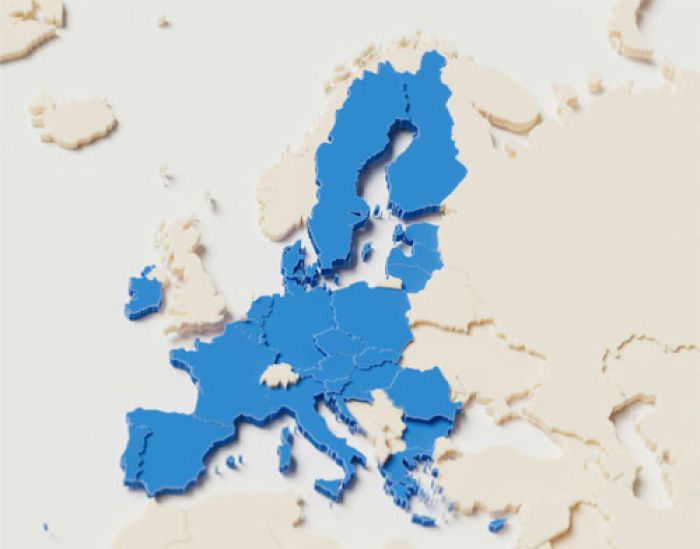News
EU Rolls Out New Biometric EES

EU Rolls Out New Biometric EES -
Travellers to Europe, prepare to say "cheese"—and maybe give your fingerprints too! The European Union is finally launching its long-awaited Entry-Exit System (EES) on 10th November 2024, according to EU Commissioner Ylva Johansson. After years of anticipation and delays, the new system is set to add a high-tech twist to your European adventures, making border crossings a bit more like a visit to the DMV, but hopefully faster and with better scenery.
So what’s up with this new system? Well if you are coming from outside the EU—yes, that includes UK—soon you’ll have to provide a digital photo and fingerprints when you arrive at the border. EES is about enhancing safety and seeing that every person’s journey is as precise as any Swiss timepiece. According to Johansson these biometric tricks are meant for ensuring smooth flows of visitors while boosting border security across the continent.
The EES has not only been designed for holders of short-stay visas. No, it casts its net wider. For instance if you are one of around 60 visa-free countries such as the UK, then before stepping onto any of the 30 participating European nations; you will need an electronic travel authorisation (ETIAS). This does not stop there though—the ETIAS would cost €7 between ages 18 and 70; however it expires after three years. If your plans include several visits across the Channel each year, then probably it could be your most useful expenditure at only €7. The introduction of the ETIAS travel system for non-EU visitors is due to go live in the first half of 2025.
While it may sound like another layer of red tape, the EES promises to be a game-changer for international travel to Europe. The goal? To boost security without turning your holiday into a paperwork nightmare. So, get ready to strike a pose at the border and embrace the future of travel in Europe. With the EES in place, your next trip to the continent might just be smoother—and safer—than ever before.
Exceptions to the EES
There are some exceptions to the mandatory registration in the EES. These apply, among other things, to:
- Nationals of the participating countries, as well as Cyprus and Ireland.
- Non-EU nationals with residence cards related to EU nationals.
- Persons who are transferred within a company or travel for research, study, training, volunteer work, student exchange, educational projects or au pair work.
- Holders of residence permits, long-term visas and certain diplomatic passports.
- Nationals of Andorra, Monaco, San Marino and Vatican City, as well as persons exempt from border controls, such as heads of state and cross-border workers.
Where is the EES required?
The EES will be in place for 25 of the 27 EU member states — Ireland and Cyprus will continue with manual checks — as well as Norway, Iceland, Switzerland and Lichtenstein, as they’re part of the border-free Schengen Area. Where EES is in place, you’ll just need to scan your passport at the automated gates, as you would when entering the UK.
However, the first time you use the EES, you will be required to supply your fingerprint and have your photo taken at the crossing. This will then be kept on file for three years, so you won’t need to do this extra step each time. If you refuse to supply this information, you’ll be denied entry.
Within the UK, EES gates will also be installed at the Port of Dover, and Eurostar and Eurotunnel terminals where passports are checked prior to travel.
Key Highlights EU Rolls Out New Biometric EES:
- Launch Date: The Entry-Exit System (EES) will go live on November 10, 2024.
- Biometric Requirements: Non-EU travellers including UK must provide a digital photo and fingerprints when they cross the border.
- Electronic Travel Authorisation (ETIAS): Among 60 visa exempt countries travellers would require an ETIAS which is charged at €7 for those aged between 18 -70 and valid for three years. (Will launch at in the first half of 2025)
- Enhanced Security: The aim of EES is to enhance safety measures while ensuring that international visitors are processed efficiently through the boarders.
- Impact on Travel: Consequently, this system is anticipated to make travelling into and out of Europe a breeze hence millions of global tourists will enjoy smooth experiences across various border points.
Thinking of travelling to the EU for you next group trip? Let one of our fantastic DMCs help you with your itinerary, accomodation and travel plans.
Search for a DMC
Our DMCs can assist with accommodation, (gala) dinners, meeting rooms, transport, team building and other options you need for your event
More News
-
Saudia Launches New Neom Bay to London Gatwick Flights
-
New Milan to Egypt Route
-
Eurowings Summer 2025 Plans
-
Lufthansa Group Brings Back Tel Aviv Flights
-
From Krakow to the City of Love
-
Ryanair adds 14 new routes from Germany
-
Qatar Airways Is Back in Malta Baby!
-
Japan Airlines Goes Sustainable with Riblet Coating
-
easyJet Improves Sustainable Travel
-
Lufthansa and Thai Airways Expand New Codeshare
-
United Airlines expands to Europe
-
Ryanair Resumes Flights to Tel Aviv
-
Say Hola to 12 Mexican Destinations
-
TUI Fly Launches Direct Flights to Finland







